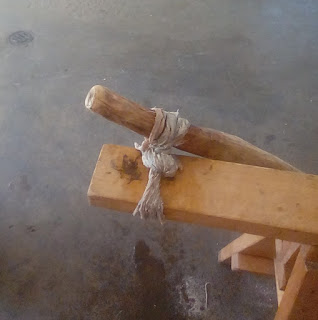On knives and rust.
Whithout question, after many years, I can say that for butchering and drying whole animals the choke knife (or uluit) is a near indispensable design. You really must have a choke knife for field meat preservation and home drying. Though i have never owned one, foregt these jerky slicing kit tools.
Having said that however, in terms of a traditional knife; if all you cary into the field is one tool - though you should and need a choke knife - a thin 1095 or other high carbon, designed like the Kephart knife, is light, but not as versatile as a heavier knife.
Stainless is too brittle for outdoor tasks. Chromium has also been linked to mental issues, but realistically, you are unlikely to consume so much from using the knife to have a major effect.
You never need to oil a knife like many outdoorsmen on YouTube have mentioned. Let them stain, tarnish; this is not just a personal esthetic preference, but a practical realistic stance to accept. I dont live in fear that I will use a knife and it will ever crumble like the rusted siding of a vw vehicle, and hopefully, neither do you.
I like high carbon, chrome-free, steel for cutting tools; they are strong and can tend to take a heck of a beating. Because stainless steel is composed of around 15% chromium, they aren’t affected by water or acids like carbon streels, but they are brittle and can break easily if used for chopping wood or battonning and thus should stay in the kitchen
If you get a thin knife, but not filletting, pairing, or other kitchen style thin knifes. A knife you can jam between a testing crevice and pry with is what you need to eliminate other tools you would need to carry otherwise; this is again why 1095 spring steel is best.
A heavy knife does have the advantage of being a chopping tool. For many other tasks, the big heavy knife is simply a more reliable companion.
My preference is for paint free, as I dont have to worry about chemicals in my food and the stained darkening of the metal can indicate weather the tool is sharp and ready to go.
I dont have many cutting tools on the go at once. I have one, use it, and stick to it until I move on, so the tool is used on regular basis.
You will use a knife or get bored with a purchased knife long before rust will affect the functional value of the tool. The patina that collects is like the knives battle scars; sometimes tattooing beautiful, wholly spontaneous designs and immages, reminding you of events you completed as a team. They make a knife look good with age .
Just whipe after use and let air dry before returning to your sheath. Oil the wood handle when desired, but this always, eventually washes away.
Don't be afraid to modify a knife that doesn't fit right in the hand and has a poor design of a handle, which is often the case. The tool will be your companion for years to come so make it yours.


